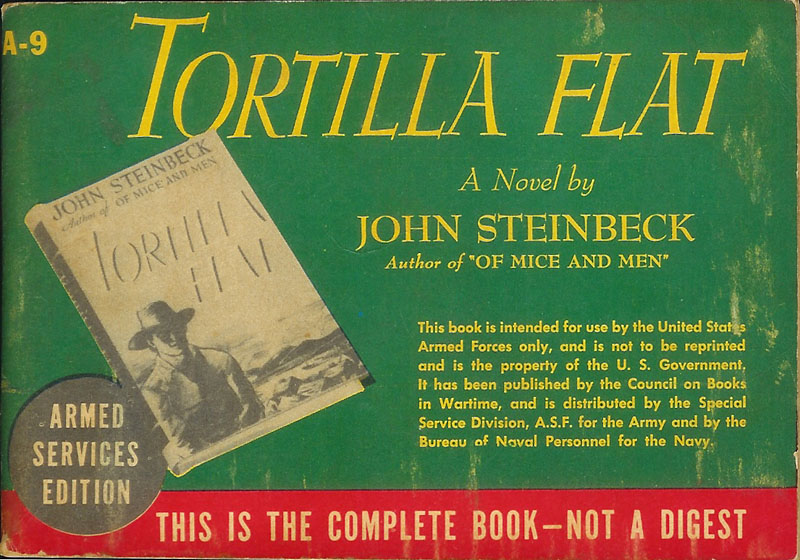


Monterey is also the setting for Cannery Row (the first of John Steinbeck’s novels that I read) and Sweet Thursday, both of which I enjoyed, so I was expecting this book to be just as good. Tortilla Flat is on the hill high above Monterey, an old city on the coast of California. It was John Steinbeck’s fourth novel, first published in 1935. Send you an email message telling you why.Tortilla Flat was my Classics Club Spin book to read by 30th April. If we decide not to incorporate your report, we will usually Most reports are processed within a few days of submission.To a printed copy, please include the edition you used. We will attempt to maintain the text of the edition that we worked from, Many books have significant or minor changes between editions.If in doubt, we will always beĬautious, and preserve the original spelling. While we strive to fix printer’s errors, many words found in ourīooks may have archaic spelling.If you think we might need to communicate with Has page numbers, please include the page number otherwise please includeĪ significant text string to help us to locate the error. If the contents of theīook, please be as precise as you can as to the location. Please be clear in your message, if you are referring to the informationįound on this web page or the contents of the book. The movie was not made until 1942 and starred Spencer Tracy, Hedy Lamarr and John Garfield.-Wikipedia. Steinbeck did however receive criticism for what was viewed by some as a stereotypical portrayal of Hispanic-Americans. The book was one of the author’s early works and an immediate hit for which film rights were sold. Most of the action is set in the time of Steinbeck’s own late teenage and young adult years, shortly after World War I. Danny’s house, and Danny’s friends, Steinbeck compares to the Round Table, and the Knights of the Round Table. The central character Danny inherits two houses from his grandfather where he and his friends go to live. The book portrays a group of paisanos-a small band of errant friends enjoying life and wine in the days after the end of the Great War.


 0 kommentar(er)
0 kommentar(er)
